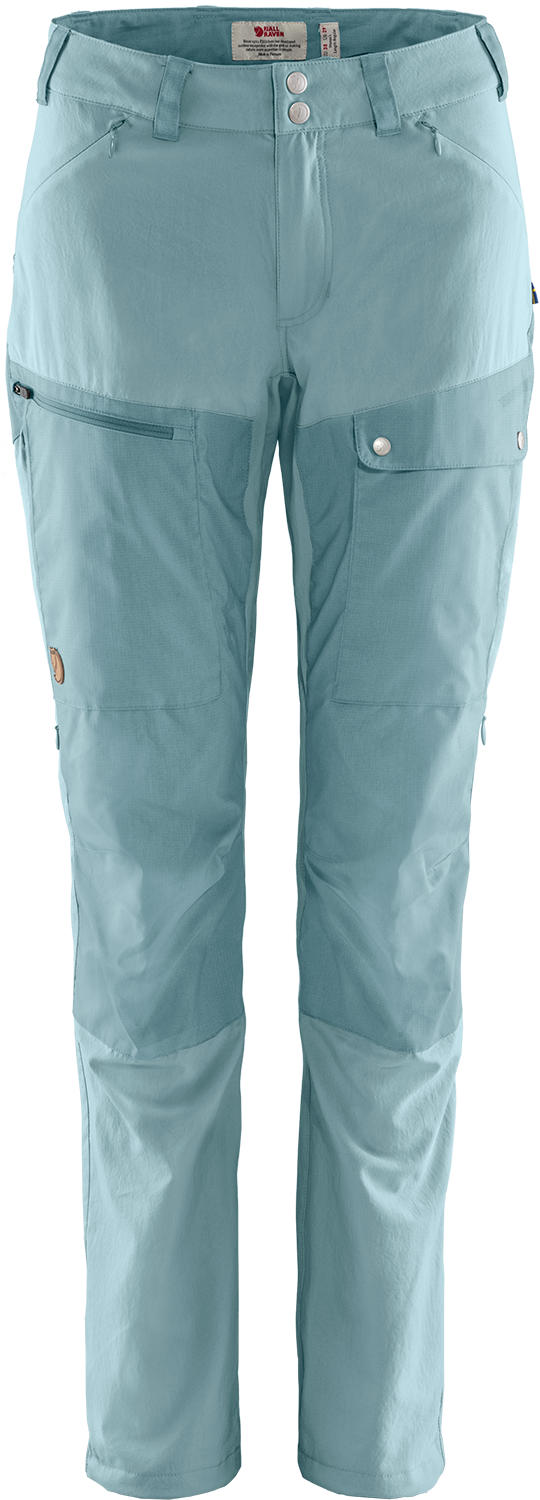What you call sweat, he calls water molecules
Fjällräven’s material expert Felix Aejmelaeus-Lindström explains how clothing for hiking in warm climates should work
Blazing sun plus humidity plus physical effort equals uncomfortable, right? It depends. Partly on how much water you drink and what shape you’re in of course, but also what clothes you wear. When you hike in warm climates, there are several factors that affect how well your clothes protect the body and how well they help the body regulate heat. It has to do with the properties of the material, how the fabric itself is manufactured and how well the garments contribute to, among other things, a good air flow and vapor permeability. In dry heat, you’ll go a long way by using the shade, using ventilating garments and making sure you’re drinking enough water.
Felix Aejmelaeus-Lindström, Fjällräven material expert
As you sweat, the water molecules evaporate from your skin and your body cools down. But in a hot and humid climate it becomes problematic. The water molecules have a harder time evaporating because the air already contains so much moisture. Then it is extra important to use fabrics that are not dense and fabrics that allow as much evaporation as possible.
“If we can assist the air flow that takes place between the garment and the skin, the water molecules move about and leave space for new ones - that is, the skin is allowed to release more water molecules so that the body can cool down more easily. For this to happen the composition of the fabric itself is of great importance”.
G-1000 Air Strech
“It affects what yarn you use, how you spin the yarn and how you make the fabric. You can create a looser fabric, where you leave some air in the fabric, and do not have as much thread per centimeter. Then the tear strength in the fabric can go down, but this can be counteracted by using so-called rip stop technique or a stronger material”. In addition to favoring the air flow, the material needs to be able to absorb moisture and dry quickly - ie spread the moisture to the outside of the garment.
Clothes are generally used to protect the body from external factors without impeding the body’s natural functions. When it comes to clothes in warm climates, it is therefore important to take into account the body’s need to regulate its temperature. The garments we develop for warm climates need to both protect against the sun’s radiation and also need to contribute to air flow and promote vapor transmission”, says Felix Aejmelaeus-Lindström.
The garments we develop for warm climates need to both protect against the sun’s radiation and also need to contribute to air flow and promote vapor transmission.
Felix Aejmelaeus-Lindström
“What you are looking for is absorption or wicking. Wicking means that the material transports moisture away from the body on the outside of the fibers instead of absorbing it”. Otherwise, the moisture will only remain on the body and you will feel wet and trapped. Felix mentions cotton, hemp and tencel as materials with high moisture absorption that dry relatively quickly. But the result is the same, that you stay dry.
Related Products
The G-1000 timeline
It's like a G-1000 family tree. Learn more about our most used material.
MT vs. G-1000 Air
Both are quick-drying, breathable and light, so why are we replacing MT with G-1000 Air?


